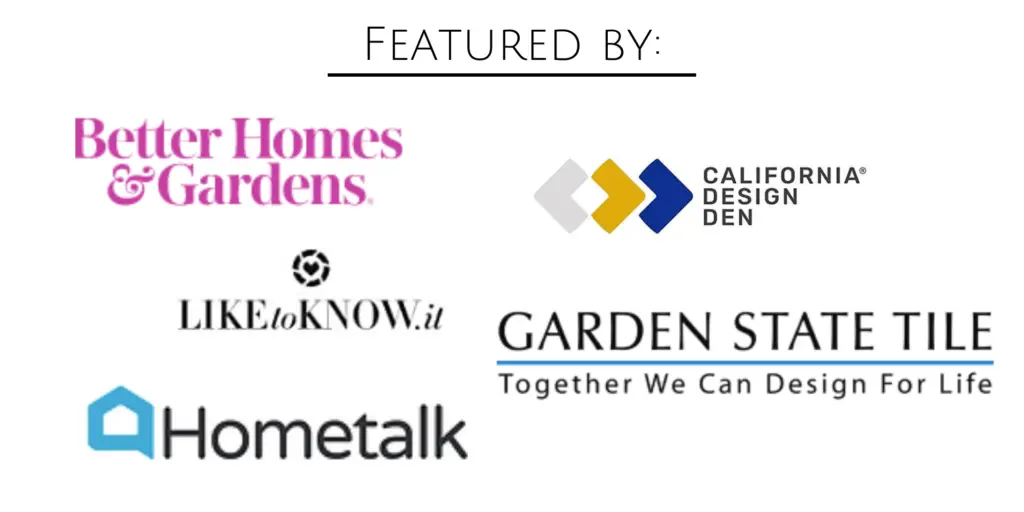
So you started a blog, business Instagram account, or some other platform you plan to monetize. But how do you know if you are actually ready to make money and charge companies for your work? Everyone starts somewhere. Let me break down the 5 things you need to do to make sure you are ready to make money as a blogger or influencer.
I remember Googling “how to make money as a blogger” on day 1, when the idea of Emily Rone Home was just a spark. I was so green and genuinely curious about how people made money from uploading blog posts to the internet.
Don’t have time to read the whole post now? Pin it here to safely save it for later 🙂

Once I figured out the basic outlets of monetization, I had no idea what the next steps to actually get paid were! I learned as I went which was fine.
But if you are anything like me, you like to be prepared and have your ducks in a row when an opportunity comes along. Let me help you prepare so you are ready to wow when someone reaches out, interested in paying you for your time and work!
This post contains affiliate links for your convenience which may reward me in the event of a sale. Note that I only recommend tools and products I have personally used and loved.
1. Create a Media Kit to Make Money as a Blogger
A media kit is just a fancy creator’s term for a resume. It is a little different from your traditional resume- AKA the one I have and use for my day job as a speech language pathologist. As a creator, it’s important your media kit reflects you, your personality and your accomplishments.
You want to be sure and include these five elements:
- Photo(s)- bonus points for a picture of your face, and a picture to showcase your best work
- About Me- share a bit about you and/or your business
- Links to all Social Media Accounts- may include website, email, Instagram, Pinterest, Liketoknow.it, Facebook, etc.
- Stats- include blog monthly page views, number of email subscribers, Pinterest followers and monthly views, Instagram followers and engagement rate, Liketoknow.it followers, etc.
- Previous Partnerships- show off collaborations you have completed in the past
My favorite templates for creating a Media Kit usually come from Canva. Don’t think you have to recreate the wheel here! I like to choose templates that allow me to include examples of my photography as well, and a picture of me so people can put a face with a name.

Bonus- get professional head shots or photos inside your home to use for marketing purposes
If you aren’t already using Canva, it’s a great resource for digital creators. Canva is a website with both a free and premium version that can help you create professional electronic marketing images with no graphic design background necessary.
2. Pricing List
I know it seems crazy to charge people for your services when you are just starting out, but it’s important to know your worth. So many companies want you to promote them in return for nothing more than free product. Depending on the deliverable they are requesting from you, that’s ok.
In the past, I have accepted free product in return for promoting a brand during a giveaway, a deep discount on backsplash tile in return for tagging the company on an Instagram post and in my stories (that I would have posted regardless), and a 1 night stay in an Airbnb to promote it on my Memphis travel blog post.

However, if a company is going to ask for anything specially made- an Instagram post, story, reel, blog post, etc. you should be reimbursed for your time. And the more creators provide these deliverables for free or in exchange for free product, the more often companies will think it’s the norm to underpay (or not pay at all) for creator’s time. So don’t be part of the problem, be part of the solution from the get go.
Setting your price depends on so many different factors. If it’s something for Instagram, all of your numbers are going to come into play. Number of followers, rate of engagement, etc. You should base pricing per post, story or reel.
Sometimes, a company may request 1 static IG post, and 3 story slides. Or 1 post and 1 reel. It’s important to have your price laid out for each deliverable. If they are requesting a blog post mention or link, that would cost far less than an entirely new. dedicated blog post to review a company or product. Your price should always reflect your time.
And last, what if they are asking for the rights to share your photos? This gets complicated, but you wouldn’t want to see your photo being used as marketing by a company for years to come without due compensation.

I can give you an example of a time where my photos were used not only with my permission, but while getting reimbursed for my time, photography, editing, skill, etc. Better Homes & Gardens reached out to use my hanging wall planter patio project as their “I Did It!” DIY feature story for the month of May (eek!). After I expressed interest in working with them, we negotiated a price for use of my photographs, complete with a contract, planned use and expiration date of usage permission.
3. Employee Identification Number
So when it comes to getting paid, you will fill out a W-9 tax form. This form asks for your social security number, Employee Identification Number (EIN), or LLC info. Yes, you can just write in your social security number and be done with it. But depending on who you are dealing with, the amount of people on the email chain, method of attachment, etc. you probably would feel more comfortable not sharing something so personal, so frequently and freely.
That’s where an EIN comes in. It’s a number associated with your business that will satisfy the W9 form and connect your income to you in the eyes of the IRS. It’s a free, quick form you fill out online to get a number immediately.
4. Create an Invoice To Make Money as a Blogger
Last but not least, the company paying you will expect an invoice for their records. I created a simple template here you can download to use. Basically, your invoice needs to include:
- Your name and address as it shows on your W9 form
- Invoice date
- Invoice number.
The invoice number is up to you- if it is your first invoice I would start with 01, and work up from there.

5. Brand Kit
Although not as vital as the previous 4 items, a brand kit helps to pull the design on all of the elements together and give your business a professional, cohesive feel. If you choose to pay for Canva pro, you can create a brand kit there and easily implement the fonts, colors and other elements into any designs you create on that platform. Alternatively, you can keep font and color information in your own records if you choose not to pay for Canva pro.

Your brand kit should include 4-5 colors. With consistent use, your followers will begin to identify you by these colors. Usually, you choose a primary color, secondary colors and accent colors. You can experiment with this color generator here to balance tone and tint.
You’re Ready to Make Money as a Blogger!
Follow these five steps to ensure you not only look the part, but are ready for any opportunities that come your way.






